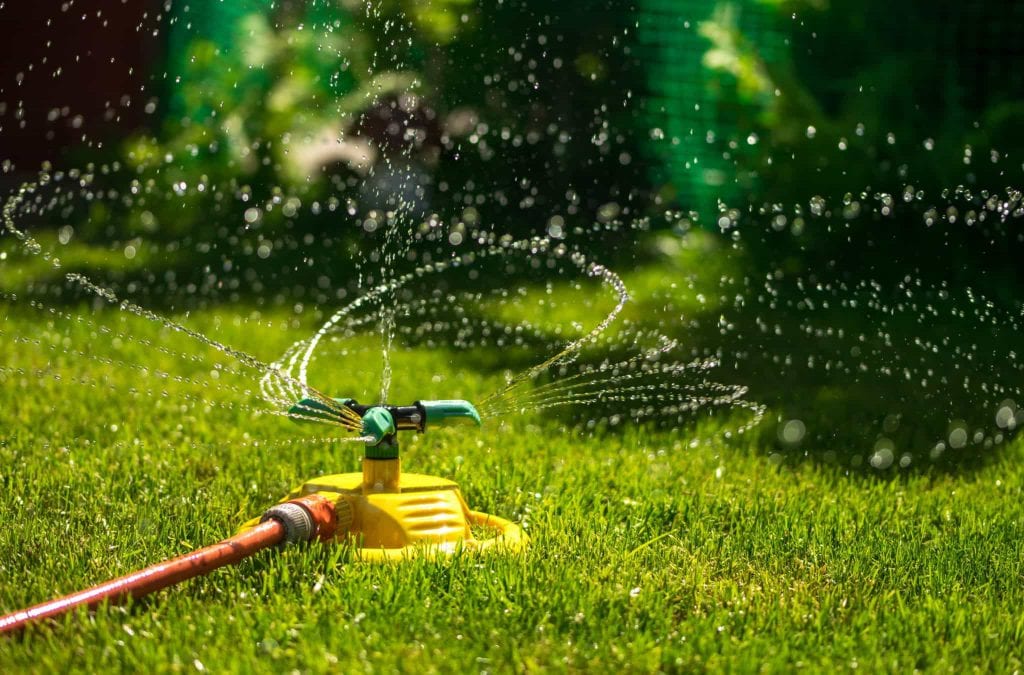The inclement weather conditions of winter makes a lawn weary. Following a few simple steps will help the lawn recover its lush green coloration and flourish. Raking, repairing damaged areas, renovating the lawn’s appearance and correct fertilizer applications restore a lawn to its pre-winter glory.
New Lawn Growth
During the cold winter months, grass enters a state of dormancy. It will cease growing which makes its general appearance become ragtag. Its lack of growth during the winter also makes it more susceptible to damage from freezing, drainage issues and snow accumulation. In order for the grass to flourish and grow correctly, the winter damage must be fixed.
Clear Debris
Before undertaking spring lawn care, allow the area to dry out. A wet or soggy lawn can sustain damage when cultivated. The roots will be easily pulled from the soil and the blades bent or broke. Once the lawn has dried out, it should be thoroughly raked to help aerate the soil. Raking will remove accumulated winter debris. It will also open up the soil and the grass blades to create air circulation. Good air circulation around the crown of the plants and each blade of grass will help prevent fungal problems from developing. A basic hard tine rake works adequately to help remove dead grass plants and lawn debris or a lawn vacuum or leaf blower for larger lawns can help with larger lawns.
Post-Winter Scarification
Moss and thatch buildup can occur from the long winter months. A lawn that suffers excessive thatch or moss buildup will benefit from a scarification treatment. Scarification should never take place if there is still any danger of spring frosts. Consider performing scarification in mid-April or later. If the lawn has excessive moss, use a moss killer two to three weeks before scarification. The lawn should be newly mown and moderately wet to successfully scarify it. Use a hand spring bok rake or a powered scarifier. The goal is to tear up the thatch, dead grass plants and any weeds. The grass will usually suffer extensive visual damage after scarification. If bare patches occur, consider patching the areas by reseeding.
Weeds
Spring is the ideal time to address pending weed. In regions where crab grass is a problem, apply a pre-emergence crabgrass weed killer to the lawn during the first weeks of April. Avoid using a crabgrass weed killer that contains fertilizers. Fertilizing the lawn too early will cause a weak root system. After applying the pre-emergence weed killer, water the lawn with about 1/2 inch of water. Mowing the lawn to a height of 2 inches will also help control spring weeds. Crabgrass seeds begin to germinate when the soil temperature reaches 60 degrees Fahrenheit so treatment with a pre-emergence weed killer will help prevent the seeds from germinating.
Fertilizer
Fertilizing in the spring replenishes the grass plant’s food supply. The fertilizer will encourage the grass to develop healthy, new growth and a strong root system. An adequate, balanced fertilizer will create a thick lawn that will be able to more easily combat weeds by choking them out. Apply fertilizer when the grass begins to show signs of breaking dormancy. Grass roots will grow when the temperature is between 55 to 65 degrees Fahrenheit. Its top growth will develop when the temperature reaches 60 to 75 degrees Fahrenheit. Never fertilize a lawn too early in the spring because the new growth may suffer damage if a late spring frost should hit. Use a balanced spring lawn fertilizer and avoid high-nitrogen mixes. A high-nitrogen based lawn fertilizer will encourage the lawn to grow and develop a deep green coloration but a shallow root system. The shallow roots will be unable to withstand a summer drought.
Apply fertilizer applications to the lawn in mid-May. Use a fertilizer that offers at least 1 pound of nitrogen per 1,000 square feet of lawn space. The fertilizer label will usually have general application guidelines. After applying the fertilizer, be sure to saturate the lawn to prevent the grass blades from sustaining damage from the fertilizer. Nitrogen can burn grass blades. A slow release nitrogen fertilizer has the least chance of accidentally harming the grass.
New Season Overseeding
If the lawn suffers from bare spots or a patchy appearance it can benefit from spring seeding. Lawn seeds will not germinate until the soil reaches 65 degrees Fahrenheit, so avoid seeding the lawn if it remains too cold. The ideal time to overseed an existing lawn is usually after mid-April. Seed Kentucky bluegrass at a rate of 1.5 pounds per 1,000 square feet, use 3 pounds of fine fescue grass seeds per 1,000 square feet or use 6 pounds of tall fescue per 1,000 feet. Spreading straw mulch across the newly laid seeds will help keep them from blowing away and will also help keep the seeds moist. Regularly water the newly laid seeds and avoid allowing them to dry out. The seeds require even moisture to successfully germinate. Usually one bale of straw per 1,000 feet will adequately protect the seeds. When seeding a lawn in the spring, consider using a starter fertilizer that contains Tupersan to avoid a crabgrass infestation.
Look Forward To A Green Lawn All Year
With only a bit of spring care, a lawn can look amazing by summer. It will also help prepare the lawn for the following winter by encouraging it to produce a strong, deep root system and store valuable nutrients.
Article Source: http://EzineArticles.com/6880902

